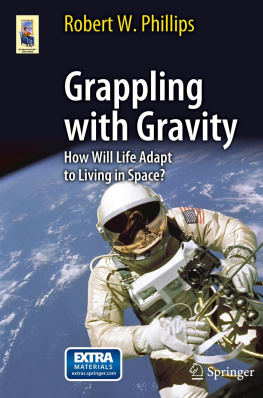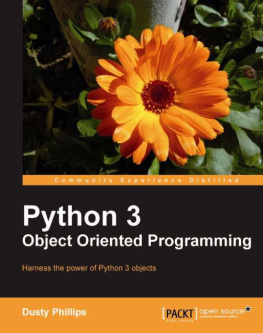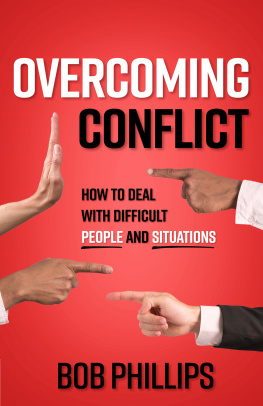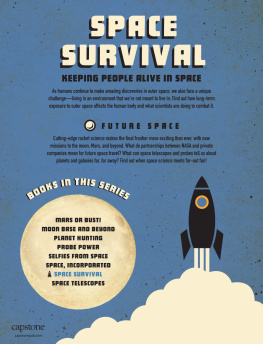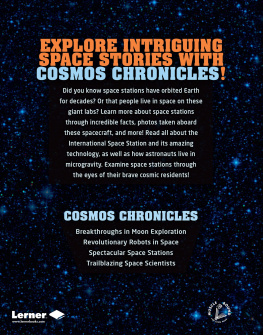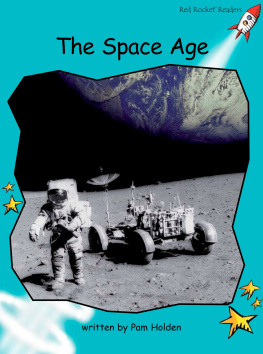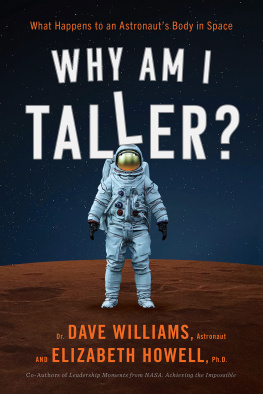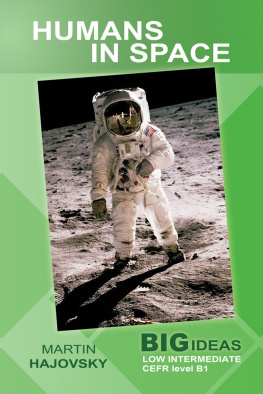Robert W. Phillips Astronomers' Universe Grappling with Gravity How Will Life Adapt to Living in Space? 10.1007/978-1-4419-6899-9_1 Springer Science+Business Media, LLC 2012
1. A Great New Adventure
I shall be telling this with a sigh
Somewhere ages and ages hence:
Two roads diverged in a wood, and I
I took the one less traveled by,
And that has made all the difference.
The Road Not Taken , Robert Frost (18731964)
There are many choices to be made in life, decisions that can change our whole existence. A decision you may have to make will be whether or not you will go into space. Our ancestors chose to go to new states, countries, even continents. For future generations the choice will be new worlds. This book is about living in space. It explains how to get there, what to expect, how it will change you physically, and more. Perhaps at first you will be a space tourist. Then a bit further into the future, you will choose to live off of Earth permanently. Maybe you will live on the moon or Mars or in a space colony. These opportunities are almost here.
Living in space requires changing and adapting to new environments. Freeman Dyson, visionary physicist and mathematician said, surviving and making a home away from Earth are problems of biology rather than engineering ( The Sun, the Genome and the Internet , Oxford University Press, 2000.) The fact that we are part of the problem doesnt prevent us from providing the solutions. There is no reason to believe that Earth life needs to be contained on Earth. We have both the capacity and the desire to turn other worlds into a new home for the human race. Nobody says it will be easy, but it is likely to happen.
One thing before you launch on this great trip: you need to like people and togetherness. If thats not for you, better to become a recluse if you are looking for a chance in life style. For the rest of us, it is a great adventure: the first new one to come along in quite a while. If you just choose not to go, thats okay too. Leaving Europe to cross the Atlantic to a new world wasnt for everyone either. Somebody has to keep the home fires burning and that would be most of the population. As always, it will be the lucky, adventurous, or perhaps crazy few who will make the trips that fuel the future.
Until now, space travel has been limited to a number of select, highly trained astronauts, or the very rich. These days are nearly over. Average citizens will have the opportunity to journey away from Earths surface and share this experience with the previously select few. Eventually space flight will not consist of just a brief visit to a strange new environment, but will entail living there, raising a family, and perhaps become a new race of humans adapting to the new environment. Before very long it will become possible to live in space or on neighboring worlds such as the moon or Mars. Once we have conquered these nearby destinations, we will undoubtedly move out farther. We may go to other parts of our Solar System or much further in the future, to planets around other stars.
Lets now explore some frequently asked questions about space travel in the near future, such as: How far up is space?, How high do I have to go to become an astronaut?, and, what kinds of trips are likely to be offered in my lifetime?
Suborbital Trips: On a suborbital trip, you travel 100 km (62 miles) above the surface to reach space. The whole trip will take about an hour or even less. If you dont get that high you have not been in space. A suborbital trip is perfect for those who just want to claim the astronaut title or briefly view Mother Earth from a new perspective. They dont necessarily care about the other benefits of a space visit or a prolonged stay.
Low Earth Orbit (LEO): Now you are 150 or more miles up, going forward at 17,500 mph, with really great views of our planet. It takes just 90 min to circle Earth at that speed. Spend a couple of days enjoying the ever-changing scenery.
Space Station Visits: You will still be in LEO, but probably a bit higher, with more creature comforts and a better opportunity to view the unfolding panorama of Earth.
Elliptical Orbit: At the apogee, or highest part of the ellipse, you will be much farther from Earth, perhaps several thousand miles, and can begin to visualize our planet as a single splendid unit, floating all alone in space, the Blue Marble.
Off to the moon!: You may go either as a tourist or perhaps as one of those hardy pioneers out to start a new life, committed to turning the moon into another habitable world for the human race.
Destination Mars: Mars is very different from the moon, much larger and with a stronger gravitational pull. The trip to Mars from Earth takes about 6 months, compared to only a couple of days to reach the moon.
After a while, people who live in space, on the moon, or on Mars will be different than the Earth dwellers they left at home. You need to know what will happen to your body without the strong and continuous gravitational pull from Earth? We are just starting to learn about that now, particularly the effects of long-term trips away from Earth. All of the changes can be lumped into adaptation. So far there has not been a single person who has spent even 1/50th of his or her life span in space. There is a lot of conjecture and speculation about long-term space flight adaptations, but only a smattering of information. We are still fumbling in the dark. Our goal is to get out of our visitor phase and think about living in a new environment.
Before we consider what happens when we make a permanent move into space, lets explore what happens on just a short trip, such as those trips taken by astronauts today. To start are the suborbital flights to be developed by commercial organizations. These flights are planned to be brief excursions of a few minutes at or above the 100 km mark. They are called suborbital because the vehicle is not going forward at a speed fast enough to stay in space. It is sort of like shooting an arrow into the air and watching it fall back down. In this case, the spaceship will either parachute back after it has re-entered the atmosphere or glide back to a landing near the flights origin.
Its possible to reach that 100-km goal with a combination of a large airplane and a small rocket ship. The airplane carries the rocket ship up 10 miles above the thick lower atmosphere and then drops it off. The engines ignite, and the rocket ship blasts the rest of the way up to or beyond that 100 km mark. It is a great thrill, but you cant really appreciate the view of our planet as seen from space in a few minutes of exposure. Imagine trying to experience a movie by only viewing the preview, tour the Smithsonian Institution in Washington, D.C. in 20 min, or experience the majesty of the Grand Canyon for 30 s. It cant be done. Those first astronaut-qualifying flights wont last long enough for the participants to enjoy some of the benefits of a longer stay. They wont begin to adapt if the trip is simply up and back.

